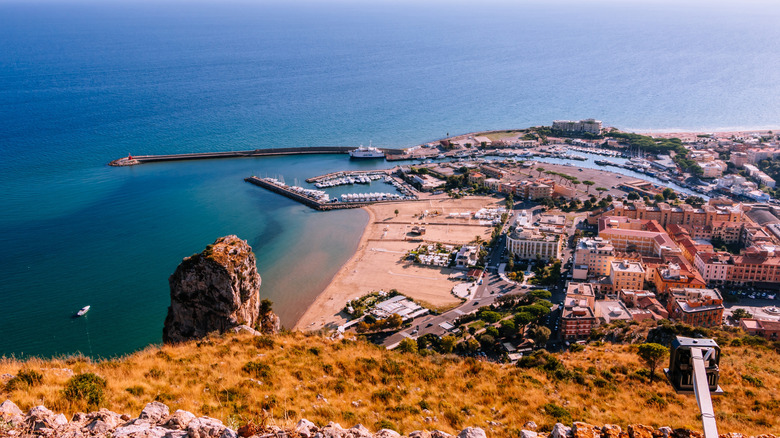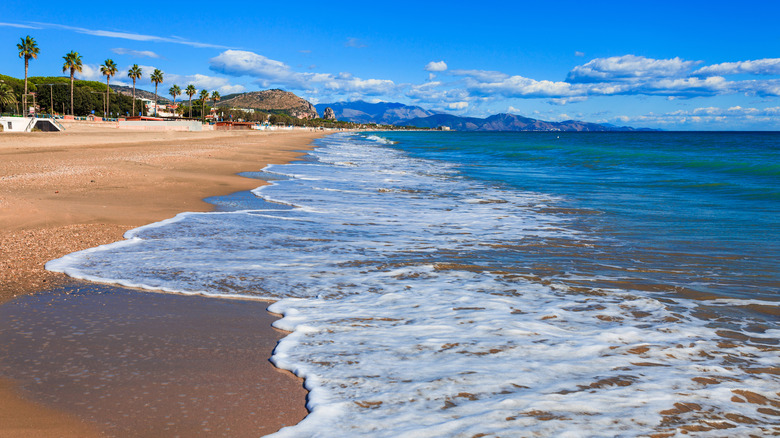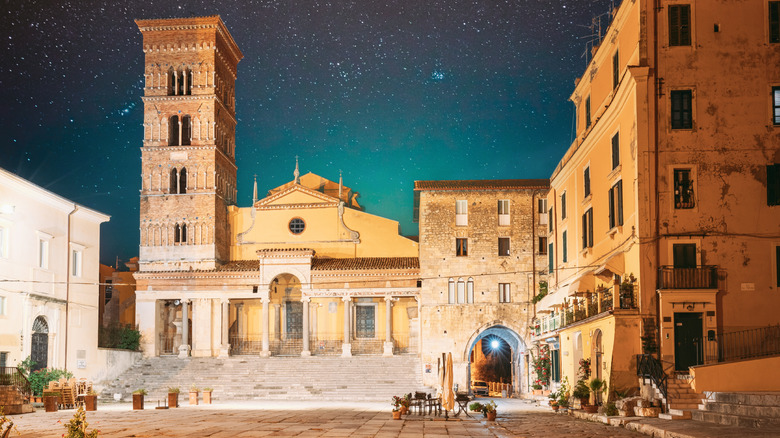Sandwiched Between Rome And Naples On Italy's Shore Is A Beach City With Fresh Seafood And Coastal Mountains
Ah, the Italian coast. From the idyllic villages of Cinque Terre all the way to the white-sand beaches and turquoise seas of Lecce in the south, there's a mind-boggling 4,700 miles of shoreline to explore on the fabled boot. The good news is that you don't have to stray all that far from the big cities to get your hit of Latin sun and sea — take, for example, the alluring resort town of Terracina, an ancient port and pit stop on the old Appian Way that's folded neatly between the Ausoni Mountains and the Mediterranean.
A drive of under two hours will bring you here from the great monuments of Rome, while a drive of a little over two hours can bring you up from the gritty and gorgeous southern city of Naples. Both these cities have major airports served by long- and short-haul flights along with train terminals linked via the regional train network to a town called Priverno Fossanova, near Terracina. From Priverno Fossanova, buses wait to take you on to the salt-washed coast town of Terracina (a 30-minute ride).
Stepping out at Terracina, you'll be greeted with long sweeps of golden sand that run alongside seas of pure sky blue. Some are left wild and untouched. Others are peppered with sunbeds for those lazing sessions throughout the summer. Back in the town center, and you've got ancient temples and tempting cafes to chill at between the age-old streets. Plus, there are rugged karst mountains with meadows and hiking paths beckoning just to the north. What more could you want?
Living the beach life in Terracina
Terracina's beaches span east and west from the town center along a particularly pretty section of the Italian shore known as the Pontine Coast. It's an area that's largely flown under the radar among international travelers but nonetheless sports shimmering bays of near-white sand, pine-backed coves, and coastal mountains peppered with lovely villages.
The main strand is Spiaggia di Levante, a bustling hub of shoreline cafes and bars with plenty of space for sunbathing, all sandwiched between the city's marina and a craggy bluff of rock. Less than 30 minutes away, Spiaggia Sperlonga gets plaudits for its cleanliness, unfolding with honey-tinted sand beside a line of seafood kitchens that serve up pastas packed with anchovies and capers and grilled fish doused in local olive oils.
Oh, and if you do happen to tire of the mainland sands, then look out to sea. There lies the utterly gorgeous — and affordable — Pontine archipelago. It consists of six rocks that rise in a symphony of volcanic stone from the sloshing blue water. Ponza is the main island and a veritable mecca for those who love swimming in picture-perfect pebble coves and cliff-backed bays (who doesn't?). Direct boats go there from Terracina, a journey of 1.25 hours.
Terracina brims with history
Rub the sand from between your toes for a spell and leave the beach behind — there's a whole load more to Terracina than just gorgeous coastline. The town has a history that spans more than 2.5 millennia! Perhaps the most striking reminder of that antiquity stands over 700 feet above the shoreline on a bluff in the form of the great Temple of Jupiter. It's a mix of high fortifications and subterranean tunnels that top out at a ruined worship hall, which drew pilgrims during the Roman age.
The Terracina Cathedral is the other great draw. It sits in the oldest quarter of the town below the temple atop the ruins of a pagan shrine. Notice the handsome Romanesque tower on one side, and duck inside to see gorgeous marble stonework from the 1200s. One past traveler summed up their moving visit to the basilica on TripAdvisor like this: "Sitting on the piazza, listening to the beautiful song or music from the church. You just leave the table and enter the church for a touch of heaven."
And that's still not it. There are pretty squares, snaking streets, and secret alleys that ooze charm all around the historic heart of the town. You can even seek out sections of the ancient Via Appia, built by the Romans, who cut into the rocks here to extract paving slabs for the roadway.


